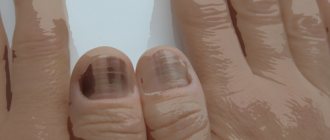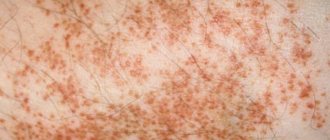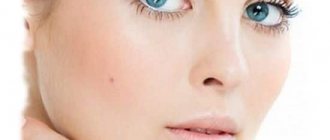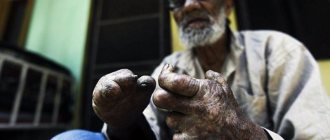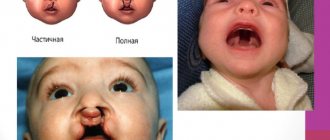When a person's health is satisfactory, the lips have a reddish or pinkish tint. It is not surprising that this indicator has become a guarantee of beauty: pink lips symbolize health, while blue in this area is scary. Blue lips are a dangerous symptom that you should definitely pay attention to. Especially if the blue discoloration lasts for a long time and does not disappear. Blue lips may indicate a number of problems that are worth discussing separately.
This phenomenon may indicate problems with blood supply, as well as pathology of the respiratory tract and concomitant diseases. All these aspects deserve special attention.
Causes of blue lips
Cyanosis, as blue lips are scientifically called, is not a separate disease, but a symptom that accompanies a number of diseases and conditions, both harmless and dangerous. Lips turn blue mainly due to the fact that deoxyhemoglobin accumulates in the blood in very large quantities. That is, the blood does not receive the volume of oxygen it needs and darkens.
Darkened blood is clearly visible in those areas where the layer of skin is initially thin. And lips are normally red precisely because blood vessels are visible here, this is an area with a thin layer of epidermis. This is easy to verify - everyone sometimes has skin peeling off their lips; it is transparent, not red or pink.
Types of pathology, accompanying symptoms of cyanosis
Lips turn blue from cold
Central cyanosis gives a bright blue color to the lips and cheeks, it occurs due to problems with blood circulation, due to which carbonic anhydride accumulates in it. There is also peripheral cyanosis, which occurs due to a decrease in the rate of blood circulation in the vessels, due to stagnation, which provides the blood with the accumulation of carbon dioxide. Cyanosis also occurs due to the fact that venous and arterial blood mixes in the human body. In this case, the person experiences increased breathing. If in the first situation cyanosis is usually provoked by increased stress on the body, and sometimes by hypothermia, then in the second it occurs due to cardiovascular pathologies.
Interesting: Why do you want to sleep in rainy weather?
What measures need to be taken
If blue lips are not caused by hypothermia or vitamin deficiency, you need to visit a doctor to determine its causes. To get started, just make an appointment with a general practitioner or family medicine doctor. The doctor will clarify the nature of the symptoms accompanying cyanosis. Then he will prescribe a series of diagnostic procedures and, if necessary, recommend an examination by a cardiologist, endocrinologist, hematologist or pulmonologist. Typically, for this problem, the following instrumental studies are carried out:
- biochemical and clinical blood tests;
- Analysis of urine;
- Ultrasound of the chest and abdominal organs;
- MRI;
- CT with contrast;
- ECG;
- EchoCG.
After receiving the diagnostic results, the doctor will be able to determine the factor that provoked the external changes and draw up a treatment plan. Treatment methods are selected taking into account the individual characteristics of the patient and the nature of the identified disease.
At the same time, there are several ways to return your lips to their normal color without medical help. In particular, drinking plenty of hot water helps, increasing blood circulation. Also, the skin begins to look healthier after performing physical activity that stimulates metabolism. As for heavy smokers, they simply need to get rid of the bad habit.
Why do lips turn blue in the cold?
Oxygen-poor blood is darker.
The most common occurrence is blue lips due to cold, but this is not the only reason. Blue lips due to cold are associated with a narrowing of blood vessels that react to low temperatures. The blood supply deteriorates, the blood stagnates, acquires a bluish tint due to the fact that it gives off oxygen before reaching the peripheral tissues. This is where the specific color comes from. A lack of oxygen in the room also causes blue lips, as does an overdose of certain drugs and increased physical activity.
Anaphylaxis and anaphylactic shock - symptoms and treatment
Anaphylaxis is based on a type 1 hypersensitivity reaction. It is called an anaphylactic or immunoglobulin-E dependent reaction.
It all starts with the body's first contact with the allergen. This “familiarity” is called sensitization. During this period, antibodies are formed - immunoglobulin E, or IgE. They attach to mast cells. Allergy symptoms do not occur, so no one notices this period and does not even realize that antibodies have appeared in the body.
Sensitization can occur through contact with “hidden” allergens, such as “traces” of eggs or peanuts in house dust. In this case, the first “encounter” with the allergen may occur at home while the child is playing on the carpet. But sensitization is also possible in the fresh air [32].
The sensitized organism reacts to repeated contact with the irritant by releasing inflammatory mediators: histamine, leukotrienes, tryptase, prostaglandins, cytokines, etc. They are released when antibodies and allergen particles bind to the receptors of mast cells and basophils.
The body reacts to the release of inflammatory mediators as follows:
- When histamine is released, nasal congestion and Quincke's edema occur, and breathing becomes noisy.
- When histamine and leukotrienes are released, blood vessels dilate, the permeability of their walls increases, blood pressure decreases, the heartbeat quickens, and a person may lose consciousness.
- When tryptase and prostaglandins are released, the wall of the airways thickens and bronchospasm occurs, which leads to wheezing, coughing and/or shortness of breath with difficulty exhaling.
- The gastrointestinal system responds to inflammatory mediators with nausea, vomiting, abdominal pain, and diarrhea.
- Skin reactions include redness, itching, and hives [9].
Sometimes the development of anaphylaxis is not associated with IgE. This reaction is called anaphylactoid, or pseudoallergic . Inflammatory mediators in pseudoallergy are released due to direct activation by certain substances, such as iodine compounds, cold or physical activity [5].
Despite the different mechanisms of development of these reactions, mast cells and basophils secrete the same active substances, so the symptoms and principles of treatment are practically the same. The only difference is that symptoms of pseudoallergy may occur immediately after the first contact with the allergen, and signs of anaphylaxis may occur only after repeated exposure. It is almost impossible to predict the development of these reactions.
Anaphylactic shock is the most severe manifestation of anaphylaxis. As it develops, blood clotting increases and its flow slows down sharply. Due to the activation of platelets, microthrombi are formed in the capillaries, which disrupt microcirculation. Against the background of such changes, internal organs begin to suffer: lungs, heart, kidneys, endocrine glands and nervous system. Failure to do so can cause death.
Other reasons
Lips turn blue when poisoned, due to tobacco and alcohol, under anesthesia, when a person is undergoing surgery. But not all reasons for blue lips are so harmless; there are other reasons that are definitely worth paying attention to. Blue lips can be a dangerous symptom, indicating a serious illness or dangerous condition in a person.
Pulmonary thrombosis, asthma, bronchitis - all these diseases cause blue lips. Pneumonia or bronchitis can also have this effect. These diseases affect the respiratory tract, preventing oxygen saturation in the blood. A long stay under water causes blue lips, again due to a lack of oxygen, which could not be inhaled, and at high altitudes the lips turn blue due to thin air - this is important for climbers and parachutists.
Problems of the cardiovascular system can also affect the color of the lips, since poorly circulating blood will quickly release oxygen without bringing it to the peripheral tissues, which will turn blue.
Blue lips as a sign of pathology
An indicator such as lip color says a lot about the state of the body. Normally, the skin of the organ should be slightly pinkish or deep crimson. If the healthy shade disappears and is replaced by a frightening blue, this is a serious cause for concern. Pale lips indicate a deterioration in local blood circulation and a disorder in local metabolism.
Vinikli nutrition - consult a doctor
To make an appointment for a consultation, call or fill out the return form:
(050) 301-99-26 (067) 446-11-79
Damn,
Your request has been successfully sent!
A call center specialist will contact you as soon as possible to clarify all the details.
In a larger context, such a symptom indicates systemic lesions of the body that disrupt the normal functioning of internal organs. In particular, it is observed in the following pathological conditions.
- Iron-deficiency anemia. Characterized by a low level of hemoglobin in the blood. Deficiency is formed as a result of insufficiently balanced nutrition, disturbances in the gastrointestinal tract and injuries that cause severe blood loss. Women with heavy menstruation are also at risk.
- Impaired functioning of the cardiovascular system (vascular thrombosis, heart attack, etc.). In these cases, blue lips are usually accompanied by a sharp increase in heart rate and heavy intermittent breathing. Such manifestations require urgent medical attention, as they are fraught with irreversible consequences.
- Croup The disease manifests itself mainly in children in infancy and poses a serious threat to health and life. The baby requires urgent hospitalization, as the likelihood of death is very high. In addition to cyanosis, the child has a strong dry cough and signs of suffocation. The main mistake parents make in such cases is to try to eliminate the symptoms on their own. Without qualified medical care, the disease quickly progresses and leads to complications.
- Diseases of the respiratory system (pneumonia, asthma, bronchitis). The inflammatory process in the respiratory tract leads to difficulty in assimilation of air, as a result of which the patient develops an acute lack of oxygen. As in the previous case, the correct solution to the problem is to call an ambulance. Treatment with traditional methods for pneumonia and asthma attacks is ineffective.
If you don't know which doctor to contact if signs of cyanosis appear, make an appointment with your primary care physician. After a conversation and examination, the doctor will prescribe treatment or send you to a specialist (cardiologist, pulmonologist, infectious disease specialist).
Why do my child's lips turn blue?
Sometimes blue lips are observed in a child. This may indicate danger. The specificity of childhood cyanosis is the underdevelopment of the respiratory organs, or the entry of a foreign body into the larynx. The first case is typical for newborns; the pathology is detected immediately after the birth of the child. Modern possibilities make it possible to save such a baby. As a rule, premature babies are born with underdeveloped lungs, up to 32 weeks of pregnancy.
Interesting: Why do people get sick in the fall? Reasons, what to do, photos and videos
When crying
A foreign body can enter the larynx at any time, at any age, creating breathing problems. A child may choke on food or put a toy or bead in his mouth. If you suspect that a child is choking, you need to immediately provide him with help. Blue lips can be observed when crying for a long time - at such moments the body also does not receive enough oxygen; for complete ventilation of the lungs, calm, measured breathing is necessary.
Thus, there are many reasons why lips may turn blue, but they all come down to a lack of oxygen in the blood. There may be little oxygen due to its deficiency in the air, due to illness or improper functioning of the respiratory system, due to slow blood circulation, which loses oxygen before reaching the peripheral areas of the body. Blood deprived of oxygen acquires a dark color; it is this that colors the lips blue instead of the usual pinkish or reddish.
Lack of oxygen in the body or the appearance of hypoxemia
Most often, it is the lack of oxygen that causes blueness, and the blue-violet color is a characteristic sign of hypoxemia. The causes of this condition may be:
- lack of oxygen (for example: when smoking, the circulation of oxygen in a person’s lungs decreases);
- inactivity during illness causes stagnation of processes in the lungs. For example, it is much more difficult to recover from sputum, since bacterial damage to the lung tissue occurs;
- blockage of the respiratory tract due to a foreign object entering it;
- surgery in which a person requires general anesthesia.
Asthmatic disease or iron deficiency
A person with asthma often experiences “blueness.” And this is not surprising, because the disease itself indicates a lack of oxygen, which occurs due to difficulty breathing. During an attack of bronchospasm, insufficient oxygen enters the lungs, which causes blueness.
If there is a disturbance in the production of blood cells, in other words, with low hemoglobin (which is responsible for skin color), the disease anemia begins to develop in the body. The disease does not occur on its own; it appears after suffering various injuries and illnesses associated with blood loss. This diagnosis can be made correctly only after conducting many studies, the first of which should be a routine blood test.
Raynaud's disease
This is when small blood vessels burst during a sharp drop in body temperature or in a stressful situation. Thus, natural blood circulation is disrupted, the color of the skin changes and a blue tint appears.
In addition, blue lips can be a sign of the development of a certain disease; it can also occur as a result of sudden hypothermia of the human body. With severe hypothermia, vasoconstriction mainly occurs , little oxygen enters the blood, which subsequently leads to the development of “blueness” of the lips.

